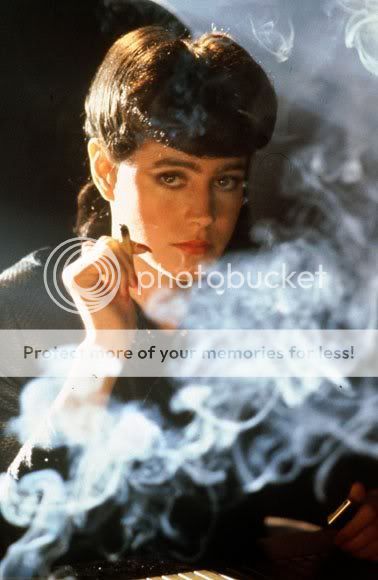Yeah, forgot about this. It’s almost as jarring as the hair. At least you only see the teeth when they’re talking or smiling.
I don’t think her hair was ever fully covered, even by that thing that came up from her chin and over the back of the air.
Looked like '50s movie star hair only mostly covered.
But…I didn’t really notice it when I first saw the movie, until she uncovered to brush her hair–and then, for a long time, she didn’t wear the chin guard, and it looked like '50s movie star hair all that time, and after that, it looked like it to me, even when she went back to wearing the chin thing.
“Movie star hair” because even in the 50s I never saw anyone in real life with hair like that. It was an ideal unrealized by the denizens of my neighborhood, even given our proximity to H’wood.
I think that films made in the 50s and 60s tended to be worse – they figured that people neither knew nor cared. Also, there’s a large element of “do what everyone else does” in Hollywood. A 1950s audience going to a western EXPECTED to see clean-cut, clean-shaved and would have been shocked at a more realistic portrayal.
I personally don’t like the “realistic” hairstyles, where the actors are grimy and dirty and greasy. That may have been realism, but I don’t go to movies (especially entertaining ones) for “realism.” I can get realism by walking around the slums of Chicago. I go to movies for fun and enjoyment, and I’d rather see characters who are reasonably clean and well-groomed. Of course, it’s always rather silly when the heroine emerges from the shark-infested waters, her hair and makeup perfect. But the super-realism and the super-fantasy are the extremes.
There’s also the actresses who go to bed with full make up on, and wake up with not a smear or a hair out of place.
Link to some photos from the movie.
When she’s wearing the wimple, we see a clump of hair over her forehead. There’s no photo of her with her hair down. IMHO her hair didn’t look like movie star hair even when it was down, except that it was long and wavy, but it was dry and fly-away, not shiny, and there was some gray.
Actually, I can’t think of many movies where Hepburn had movie star hair. In the ones I’ve seen, her hair is kinda frumpy.
Anyway, I think they got it right in that movie.
I was watching a program about the Dark Ages yesterday on the History Channel, and all the peasants and farmers had dirty hands and faces. Did they use all the rain water (and lake and river water) just for drinking? I find it hard to believe that those folks never ran a damp rag (or even a dry one) over their faces.
They didn’t even drink the water, actually. Small beer and such.
Oh, good point. But they had to have water to make beer. The water might not have been safe to drink but it would have been fine for washing. Plus, they’d sweat, and wiping sweat off your face takes some of the dirt with it.
OTOH, if they showed peasants with clean faces, that wouldn’t seem right either. ![]()
A huge factor, probably the main one, probably the single factor that made this cavalier attitude toward realism of period fashion something of a tradition in Hollywood that remains in force to some extent even today, was the studio system.
Before the studio system began to fall apart in the 60s, every star on the screen was “owned” by a particular studio. They represented an investment on which the studios expected to receive a return on, hopefully for as long as possible. Thus there was more to consider than the surface realism of this or that film: there was the boxoffice for the NEXT film the star might make to consider as well.
Each star was a product, a brand, that had to be protected. It was a business decision to ensure that the star always looked as glamorous, or at least as recognizable, as possible, thus maintaining and protecting the brand. There were very, very few exceptions to this, actors whose brand was more about acting than glamor–Bette Davis comes to mind. But for the most part, greasy or unflattering (by the day’s standards) hair on a studio’s biggest moneymaking brands was simply seen as a bad business decision.
One of my favorite examples of this is the 1935 Howard Hawks film (screenplay by William Faulkner) Today We Live. Look at these stills of Joan Crawford and try to guess what the date the story’s set in. Go on try.
Joan in a tasteful tweed.
Here, if you want that bizarre fashion statement a little zoomed in.
A hat whose geometry it took me quite a while, and several freeze frames, to figure out.
A truly unfathomable dress, in any decade.
And if you thought there couldn’t be a more unflattering angle on that dress . . .
K, ready to guess? Look at the hair, makeup, fashion–and guess the date.
1916
I came here to mention Funny Girl-but somebody beat me to it.
lissener, I guessed 30’s or even 40’s because of that first dress, but that awful ruffly thing sent me back to the 1880’s, or maybe to some unknown future. That was fugly.
Maybe the person in charge of costumes was boinking a producer?
I liked the hat though. I think Joan Crawford was really attractive, until her eyebrows took over.
They intentionally avoided washing. The theory was that the dirt formed a protective layer on your body. Seriously.
